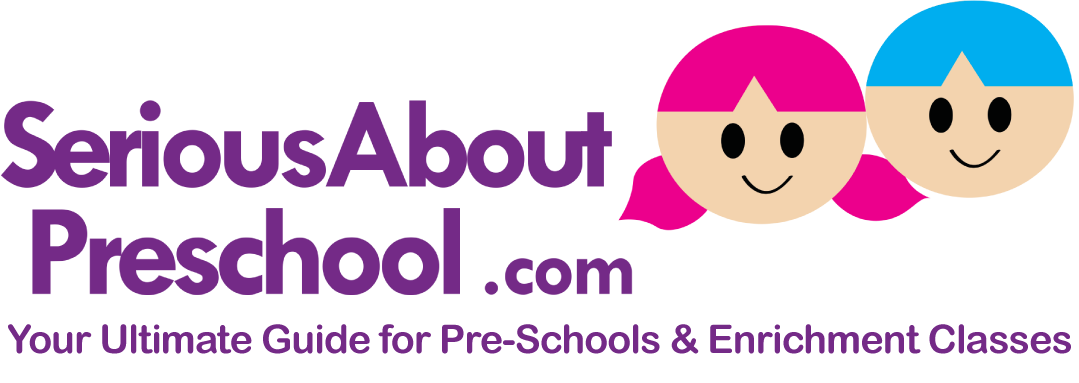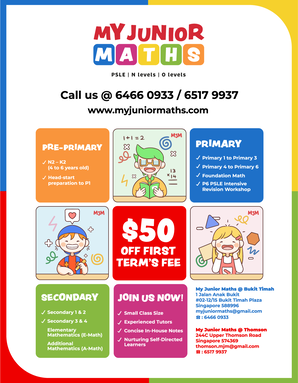How to Score in Your Child's English Oral Exam?
Whether it's P4, P5 or PSLE Oral Exam, it is just as important as it contributes towards achieving a good overall grade for the English Subject. With the introduction of subject banding in the Primary School Examinations, the Oral Exam is now a crucial factor in deciding if your child gets a higher or a lower subject banding!
The English oral exam consists of two sections, reading aloud and stimulus based conversation. Read on for tips to help your child better prepare for the English oral examinations, and get a higher subject banding for his or her English Exam!
(A) Reading Aloud (Passage Reading)
The first section of the English Oral Examination is Reading Aloud. For this section, students are given a passage to read to the examiner. The examiner will then assess them based on the following oral skills:
-
Pronunciation and Enunciation of Words
As your child reads the passage, the examiner is looking for students who are confident when they read aloud. Your child will need to be mindful of demonstrating good pronunciation and clear articulation of words. -
Rhythm and Fluency
The examiner will be observing how well your child uses appropriate rhythm to achieve a well-paced, fluent reading of the passage. -
Expressiveness
The examiner will also be looking at the ability of your child to convey emotions and feelings through reading the passage. Here, your child will be assessed on how well he or she reads with appropriate variation of pitch and tone to best express emotions.
The Reading Aloud section of the English oral exam is considered the easier of the two sections. Make sure to take advantage of this section to score well. You can help boost your child’s confidence by following the steps below to help prepare for his or her oral examination:
-
Use the preparation time wisely
Before the start of the Oral exam, your child will be given 5 minutes to get ready. Students should use this time to read through the passage and take notes of any words that they may not know how to read.
For example, if the passage contains an unfamiliar word, use this time to decide on the proper pronunciation. One way to do this is by breaking up the word into syllables instead of reading it as a whole. For instance, the word “alligator” can be broken down into 4 syllables “a-lli-ga-tor”. -
Pause at the relevant places
Reading non-stop at a fast pace can cause your child to lose marks for sounding too monotonous. Do remind your child to take a break and pause at all the right places while reading. Look out for punctuation marks to determine whether pauses should be made. For example, the commas call for a short pause, while the full stops and the start of a new paragraph indicate a longer pause. -
Apply the right tones to convey emotions
Your child should pay extra attention to convey emotions in the passage by changing his/her tone and pitch. This adds life to a story and reveals the emotions of the characters.
For example, if your child sees an exclamation mark, he/she should read the sentence slightly louder. Adding suitable emotion to the sentences will make them sound interesting and more appealing. -
Heteronyms
There are some words that have different ways of being pronounced. For example, the word “the” is pronounced differently when it comes before a vowel sound. One pronunciation sounds like "thuh” while the other sounds like "thee". When the word after "the" begins with a consonant sound, people usually use "thuh”. When the word after "the" begins with a vowel sound, people usually use "thee".
(B) Stimulus-based Conversation

In the past, this section used to be picture description which revolved around a picture of a scene. However, it has now evolved to feature pictures that may come in the form of brochures, posters or signages.
In the beginning of this section, your child will be asked questions that are directly linked to the picture following questions that are related to the topic of the picture. These are the aspects that your child will be assessed on:
-
Personal Responses
The examiner will be assessing qualities such as:
-
How well your child initiates new points and explain it along with stories, facts or news
-
How well your child shares his opinions or makes a stand
-
Clarity of Expression
Your child must express him or herself clearly while engaging in a conversation with the examiner. Your child should share his stories with as many details as possible as well as sharing his/her personal experiences. However, your child should also listen to the examiner’s question carefully as this reflects on how well your child interacts with the examiner and responds to the questions without appearing nervous or dull.
To help you support your child in the Stimulus-based Conversation, here are some tips:
1. Study the picture with a purpose
For pictures that come in the form of brochures or posters, your child should read through them thoroughly instead of merely skimming through. During preparation time, your child should pay attention to details and predict some possible questions that the examiner will ask and how he/she can respond to them.
2. How to bring in stories?
When responding to the examiner’s question about the picture, your child can also share related stories to give the conversation life. It will be easier for your child to share their own experiences. Other than personal experiences, your child can also mention relevant facts or news.
3. Language
Constantly remind your child the importance of using formal English. Even though it is a conversation, your child should mind his/her language and at the same time use appropriate vocabulary to bring the conversation to life. But above all, do remind your child to maintain eye contact with the examiner once in a while, as this is a good way to show that your child is focused on the conversation and actually listening to what the examiner has to say.
4. Time to think
It is alright for your child to take a few seconds to think before answering the examiner. However, do ensure that your child does not take too long to come up with an answer. Your child can buy some time by using fillers such as “I would say…” or “I think…” to keep the flow of the conversation going while he/she structures his/her answers.
However, if your child did not hear the examiner’s question the first time, remind your child to stay calm and ask politely for the examiner to repeat the question.
The English oral examination does not have to be an intimidating experience for your child. You can ask your child to take it as if he is having a conversation with a friend. We hope that these tips will be helpful in preparing your child for the oral exam!

Worried about your child's English Oral Exams? Take up the English Oral Crash Course with Chattering Kids to drill on the actual PSLE questions with their teachers!
Sign up for 1 to 1 60 min online English Oral classes and learn at the comfort of your home! Limited slots. 1st Come 1st Serve
Book your regular lessons now: https://bit.ly/3m1UjDz
Website: www.chatteringkids.com/english-oral-class
Related Video: English Oral Tips for Primary 3 to 6


















